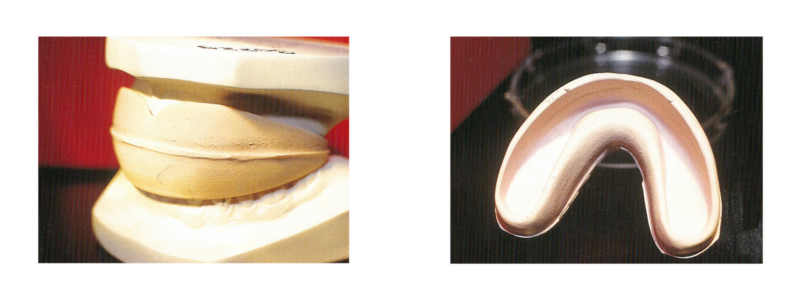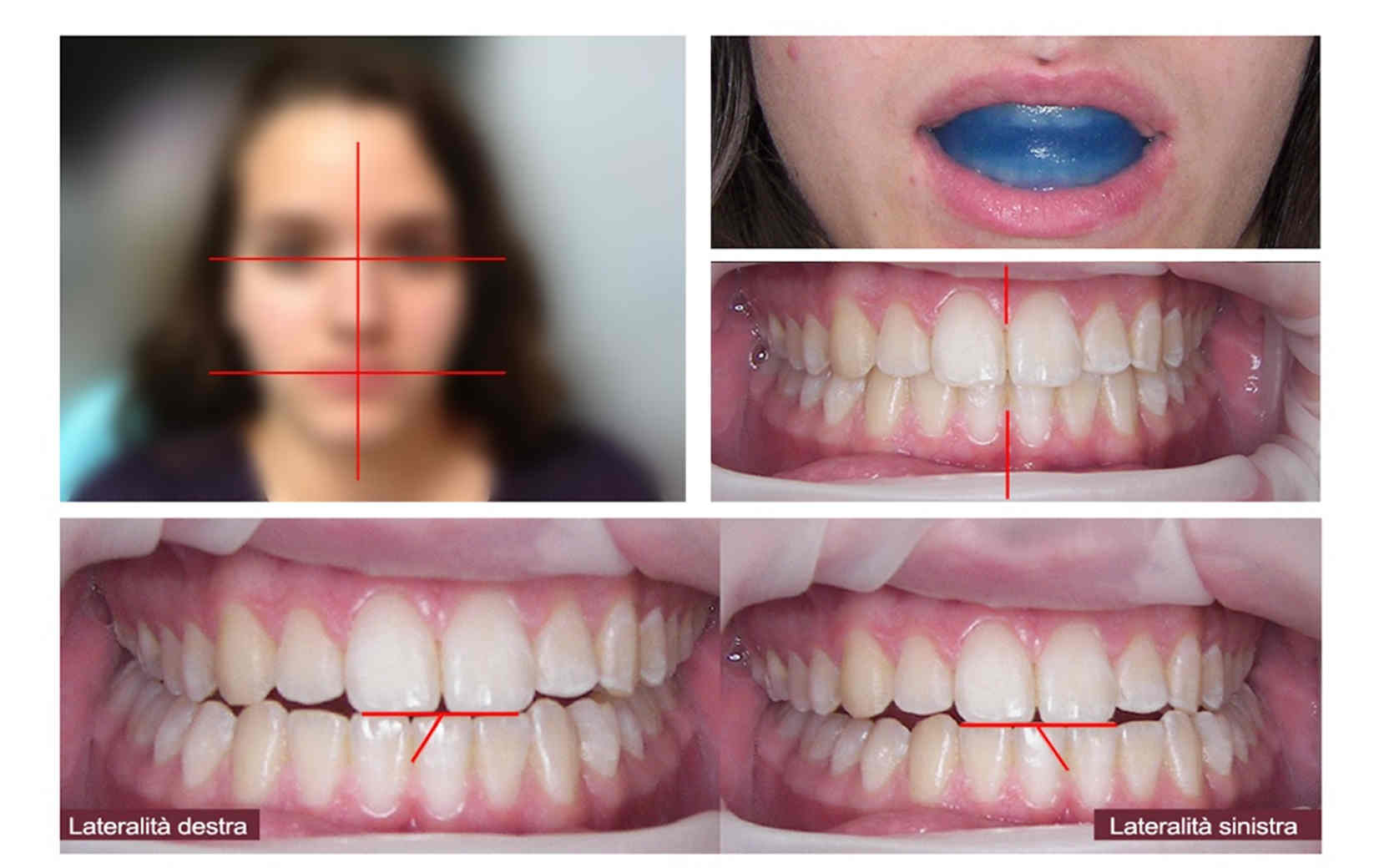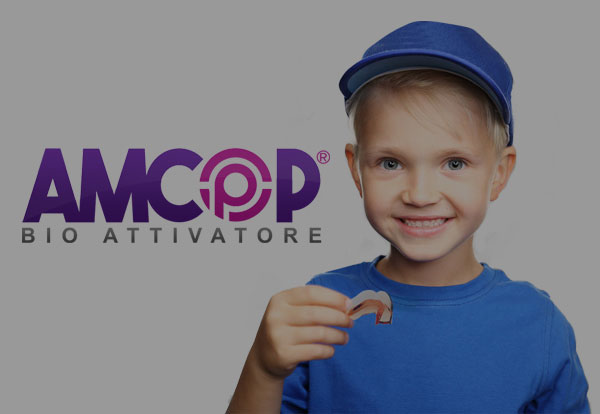SB - SOULET-BESOMBES
In the 1950s, professors Soulet and Besombes, from the French school of functionalist orthopedics, created a new device with elastic characteristics suitable for a type of functional-orthopedic orthodontics, using rubber material called SB.
The device was called "activator" and was used as a true functional-orthopedic device in the cranio-mandibular relationship and also as a growth simulator for correct masticatory function. Professor Besombes defined their therapy as an orthopedics of interception (mastic-therapy-reflex). The goal to be achieved with this activator was to position the mandible correctly through the action of the upper jaw, in order to act on the tensions of the sutures and cranial structures, renormalizing the position of the different bones of the entire cranio-facial system and with the consequent positioning of the teeth, determined by this new bone balance.

Soulet-Besombes Activators - SB
RNO - NEURO-OCCLUSAL REHABILITATION – PLANAS
Professor Pedro Planas began his study of Neuro-Occlusal Rehabilitation (RNO) in the 1950s.
Deepening the research on the origin of periodontitis, he observed how important the stomatognathic neuro-muscular functions were in their pathogenesis and how effective it was to respect them to "lead the abnormality towards normality".
Thus he begins a path aimed at a specifically functional type of orthodontics.
The shape arises for necessity of our body to perform a function.
Muscle nerve tissue develops first and then bone. Bone is born on the basis of how the muscular nervous tissue works, and it is, in fact, the pulling action of the muscle on its bone insertion that creates osteoblastic action. According to Planas, depending on how the bone develops, a certain type of mantle-type ossification is maintained which continues throughout life and which is the hope of being able to treat and rehabilitate patients.
Consequently, Planas addressed the problems arising from the deviations of the midlines, their interceptions and corrections, especially in the growth phase, exploiting the principle that the anatomy / physiology of the stomatognathic apparatus at this time can be modulated therapeutically. According to Planas, it is important that correction begins at an early age. Thanks to the immaturity of the periodontium and osteogenic plasticity, both a growing remodeling of the mandible and a dental repositioning can be easily implemented in this phase, in order to avoid extractions, except in exceptional cases.
Planas emphasizes the importance of breastfeeding, emphasizing the role of sucking movements on the development of the stomatognathic system.
BALANCED MOUTH Symmetrical face - Angle's First-Class contacts

Laterality contacts on all teeth on the working side and equal chewing angles (PLANAS)
Result obtained with the use of AMCOP Bio Activators, functional orthodontic devices made in Bari
FNM - NEUROMUSCULAR FUNCTION - JANKELSON
 The development of the philosophy of neuro-muscular occlusion also began in 1953. FNM is based on the application of diagnostic-therapeutic procedures in order to determine the treatment for functional orthodontics in compliance with individual physiological characteristics. FNM deals with muscles, nerves, TMJ, teeth and all other tissues present in the stomatognathic system.
The development of the philosophy of neuro-muscular occlusion also began in 1953. FNM is based on the application of diagnostic-therapeutic procedures in order to determine the treatment for functional orthodontics in compliance with individual physiological characteristics. FNM deals with muscles, nerves, TMJ, teeth and all other tissues present in the stomatognathic system.
Jankelson, unlike his fellow occlusion mechanists, deals with functional occlusion: muscles and TMJ, in consideration of the mandibular posture for a close interrelation between dental occlusion and body posture.
Jankelson recognizes swallowing as the main function of the stomatognathic system, through the study of measuring the activity of the muscle component.
A good occlusion is the result of proper swallowing. Correct swallowing is gnathology.
Generally, it is thought that the stomatognathic apparatus consists of teeth, the mandibular and maxillary bone structures and the temporomandibular joint (TMJ), therefore it is considered as a bone-arthro-dental complex.
Jankelson, on the other hand, sets his work on chewing physiology, shifting the focus from the TMJ to the system and muscular action.
The search for the correct closing position must take place on the basis of neuro-muscular and non-articular parameters. The jaw and the TMJ, without the action of the muscles, would not have any dynamic activity and consequently the TMJ, like all other joints in the body, would have limited movement.
Ultimately, for Professor Jankelson the restoration of mandibular dynamics in neuro-muscular function is fundamental.
FUNCTIONAL ORTHOPEDIC THERAPY – E. MUZJ
 In the same period, exactly in 1952, Professor E. Muzj published: "Functional orthopedic therapy".
In the same period, exactly in 1952, Professor E. Muzj published: "Functional orthopedic therapy".
This is a very specific functional-orthopedic orthodontics.
Functional orthopedics is a therapy of choice, in which the processes are broad and are destined to become more and more profound. It appears to be the therapy of the future, if compared to local mechanical therapy (orthodontics), which, on the other hand, is limited to some precise indications.
The problems will not be solved until the dysmorphosis is looked at with a geometric eye and as long as the bucco-facial apparatus is continued to be considered as an organ to be measured with the traditional system of planes and fixed points.
We cannot speak of functional therapy if we are referring to an appliance designed to push the teeth and jaw back or forward.

«We can speak of functional therapy only when the patient performs a “gymnastics” through voluntary muscular exercises.»E. Muzj

CONCLUSIONS
AMCOP Bio Activators, functional orthodontic devices, with the specifically plastic effect of the used materials, allow a type of gymnastics with a neuro-occlusal rehabilitation effect through the recovery of the correct neuro-muscular function, practicing real orofacial physiotherapy exercises by the patient.


